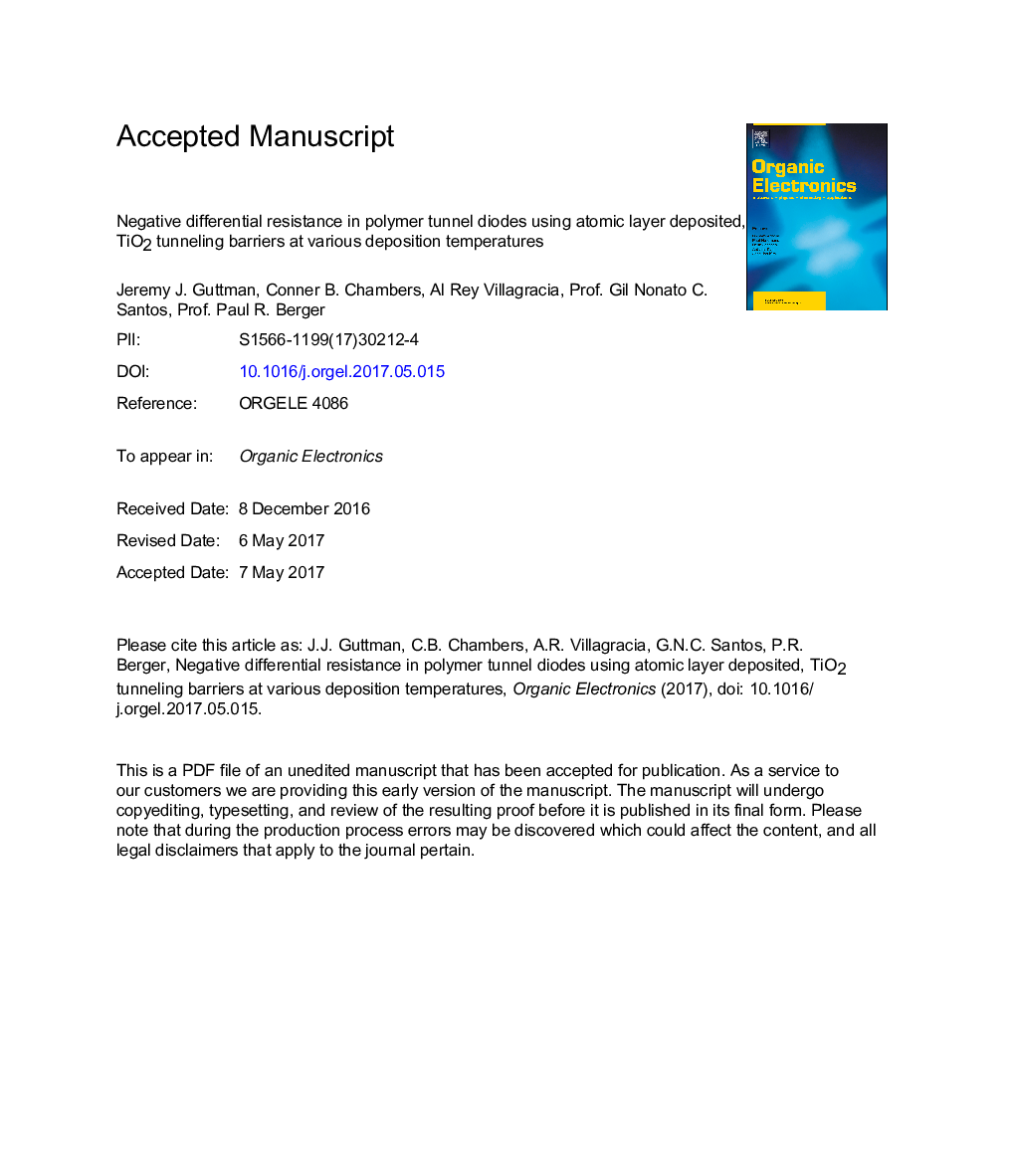| Article ID | Journal | Published Year | Pages | File Type |
|---|---|---|---|---|
| 5144116 | Organic Electronics | 2017 | 20 Pages |
Abstract
Atomic layer deposition (ALD) presents a method to deposit uniform and conformal thin-film layers with a high degree of control and repeatability. Quantum functional devices that provide opportunities in low-power molecular and organic based memory and logic via thin metal-oxide tunneling layer were previously reported by Yoon et al. [1]. Demonstrated here area polymer tunnel diodes (PTD) with high negative differential resistance (NDR) using an ALD deposited tunneling layer grown between 250 °C - 350 °C. A critical relationship between deposition temperature, oxygen vacancy concentration and room temperature NDR is presented. In this work, for a TiO2 deposition temperature of 250 °C, the peak NDR voltage position (Vpeak) and associated peak current density (Jpeak) are â¼4.3 V and â0.14 A/cm2, respectively, with a PVCR as high as 1.69 while operating at room temperature. The highest PVCR recorded was 4.89 ± 0.18 using an ALD deposition temperature of 350 °C. The key advantages of the ALD process used in fabrication of PTDs are increased repeatability and manufacturability.
Keywords
Related Topics
Physical Sciences and Engineering
Chemistry
Chemistry (General)
Authors
Jeremy J. Guttman, Conner B. Chambers, Al Rey Villagracia, Prof. Santos, Prof. Berger,
